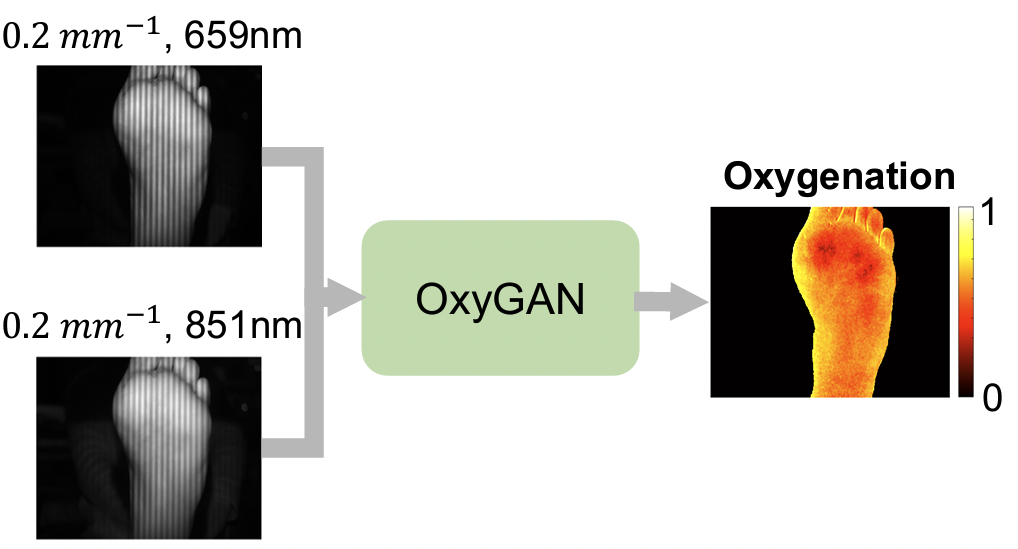Structured light for data-driven quantitative tissue imaging
Tianyi (Mason) Chen
Ph.D. Thesis, 2022
Abstract
Compared to the other major medical imaging modalities (CT, MRI, PET, ultrasound, and microscopy), conventional wide-field optical imaging is particularly qualitative. For endoscopic and laparoscopic optical imaging, the spatial scale of the image is typically unknown, heterogeneous, and rapidly changing frame-to-frame. Moreover, the fundamental optical properties of the imaged tissue are conflated in the acquired images. This leads to several clinical limitations. The absorption coefficient, which can indicate important biomarkers such as tissue oxygenation, cannot be unambiguously determined. Moreover, for machine learning analysis of endoscopic images, qualitative image inputs lead to large training datasets requirements and limit generalizability compared to algorithms trained with quantitative images. Quantitative optical imaging may be key to enabling reliable artificial intelligence algorithms for tasks such as tissue classification or tumor margin assessment. Spatial Frequency Domain Imaging (SFDI) is a relatively new optical imaging technique that is capable of wide-field quantification and mapping of tissue optical properties. Using structured illumination at different phases and spatial frequencies, it is capable of unambiguously decoupling optical absorption and scattering. In recent years, SFDI has seen growing use in many applications, such as wound monitoring and diabetic ulcer staging. Unfortunately, conventional SFDI approaches suffer from the trade-off between imaging speed and accuracy. SFDI also requires a projection system, which limits the potential for clinical adoption in space-constrained applications, such as endoscopic imaging. In this work, we present a technique that leverages the power of data-driven methods, such as convolutional neural networks, to achieve real-time and accurate optical property and tissue oxygenation mapping from single-shot SFDI images. We also develop a signal processing model for projector-free SFDI using random laser speckle patterns as structured illumination. This approach is promising for rapid, low-cost, and compact endoscopic imaging of optical biomarkers. Overall, our work has the potential to facilitate clinical translation and adoption of quantitative tissue imaging techniques.
